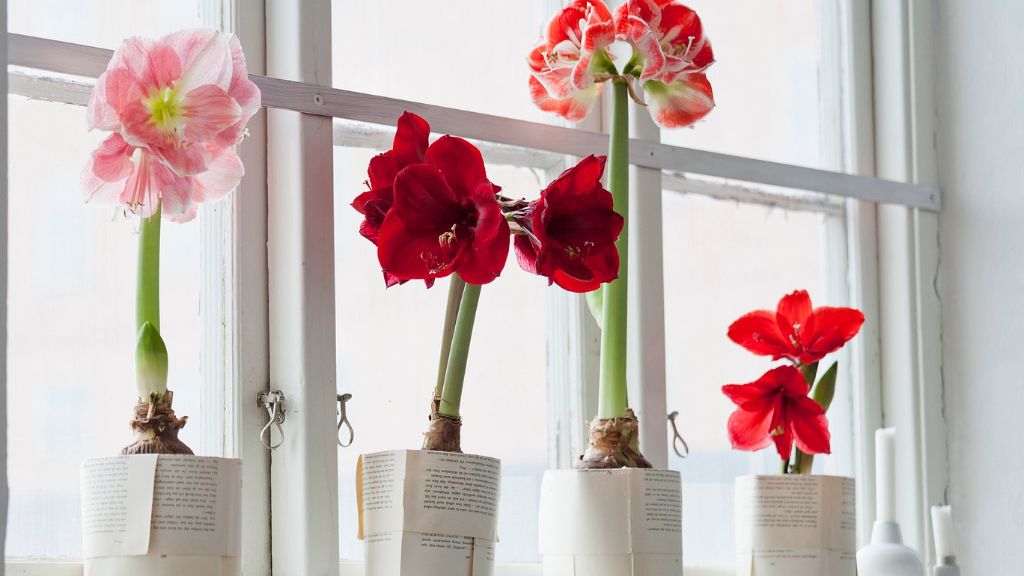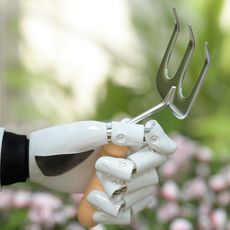Forcing Amaryllis Bulbs Indoors During Winter


Despite being an avid gardener, I have always struggled when it came to growing plants indoors. In my small home, I simply couldn’t find the ideal location to grow healthy houseplants. With only one south-facing window, most plants withered away quickly from a lack of light or improper watering. It wasn’t until I began to explore the idea of forcing flower bulbs that I had my first success with indoor plants. Since that time, my love of growing flower bulbs throughout winter has grown exponentially.
Many different types of flower bulbs can be forced to bloom throughout winter. While plants like narcissus, tulips, or hyacinths will require a period of cold treatment to initiate bloom indoors; some do not. Most popular among these types are amaryllis. Though the genus itself is quite large, finding specimens suitable for forcing is very easy. Bulbs for forcing can be ordered online or found in garden centers each fall, generally before the arrival of the first frost. Fully-forced potted plants, which are in bloom, can also be found throughout much of the winter holiday season at retailers. Over the years, I have enjoyed the process of collecting various cultivars of Amaryllis hippeastrum for forcing in winter. Though most of these plants produce flowers that are a true brilliant red, there are varieties which produce blooms in white and attractive shades of blush pink.
Forcing Amaryllis Bulbs Indoors
The process of forcing amaryllis bulbs is quite simple. Foremost, it is important to look for large, healthy bulbs. When shopping at garden centers, I specifically seek out the most sizable amaryllis bulbs that I can find. In my own experience, larger bulbs have shown to produce robust plants with strong stems and well-branched flowers. To the touch, each bulb should be firm, without any soft spots. Before purchase, I also double check to avoid any signs of mold or other damage that may have been caused by insects or may have occurred during shipping.
Once I have selected my bulbs, I decide when I’ll want the amaryllis to begin blooming. Most cultivars will state the days or weeks to maturity on the plant’s packaging. Counting backwards from the desired bloom date, I can determine my estimated planting date. At this time, I’ll carefully pot up the bulb, making certain that half to one-third of the bulb remains above the soil line of the container. As forced amaryllis bulbs grow best when slightly root bound, I often choose smaller-than-usual containers for their growth, allowing about 1 inch (2.5 cm.) between the edge of the bulb and pot. After planting, I water the bulb well and do not disturb it until the first signs of growth appear.
Throughout the period of growth, the amaryllis container is positioned near a bright window, which allows for indirect light. During this time, I provide additional water as needed, making certain to avoid oversaturated soil. As the plant grows taller, some varieties may require the addition of a carefully placed bamboo stake to ensure that the flower stem remains upright, and that the container does not topple over.
With very little care, forced amaryllis bulbs reward growers with a beautiful, weeks-long display of flowers. After bloom, the bulbs can be preserved to be forced again. I begin this process by removing the flower stem from the plant, after all blooms have faded. During this time, all other foliage should be left intact. Continued watering throughout the duration of the winter season will help to ensure that the bulb remains healthy. After the weather has warmed sufficiently in spring, and all chances of frost have passed, amaryllis pots can be hardened off and moved outdoors.
Gardening tips, videos, info and more delivered right to your inbox!
Sign up for the Gardening Know How newsletter today and receive a free copy of our e-book "How to Grow Delicious Tomatoes".

Tonya Barnett has been gardening for 13 years. Flowers are her passion. She has transformed her backyard into a cut flower garden, which she regularly chronicles on her YouTube channel http://www.youtube.com/@tonyawiththeflowers.
-
 Best Indeterminate Tomatoes: Flavor-Packed Varieties For Fresh Harvests All Summer Long
Best Indeterminate Tomatoes: Flavor-Packed Varieties For Fresh Harvests All Summer LongIndeterminate tomatoes are vining varieties that fruit all season. Discover their distinctive features and how to choose the best type to grow in your garden.
By Bonnie L. Grant
-
 The Dangers Of AI For Gardening – How To Know What’s Real When It Comes To Your Garden
The Dangers Of AI For Gardening – How To Know What’s Real When It Comes To Your GardenThings aren’t always what they seem when it comes to using AI for gardening. Be discerning when relying on AI for accuracy, and take the time to do research.
By Teo Spengler